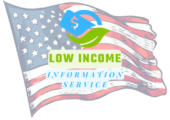Mortgage Loans for Low Income
Are you a low-income borrower looking to secure a mortgage loans for low income? You’re not alone. In this blog post, we will provide you with a comprehensive guide on understanding mortgage loans specifically designed for individuals with limited income. We will explore the various options available to low-income borrowers, and discuss strategies for navigating the application process to increase your chances of approval. Additionally, we will offer insights on how to maximize the benefits and opportunities associated with these mortgage loans. If you’re ready to make your homeownership dreams a reality, keep reading to find out more.
Understanding Mortgage Loans For Low Income
For many low-income individuals and families, the dream of homeownership can seem out of reach. However, with the right knowledge and support, obtaining a mortgage loan is possible even with limited financial resources. Mortgage loans for low-income borrowers are designed to provide access to affordable housing options and help individuals build equity over time. In this blog post, we will explore the various aspects of these specialized loans and discuss ways to navigate the application process successfully.
One key aspect to keep in mind when considering mortgage loans for low income is the importance of understanding your financial situation. It is crucial to have a clear picture of your current income, expenses, and debt obligations. This will help determine the loan amount you are eligible for and ensure you choose a loan that fits within your budget. By evaluating your financial standing, you can gain a realistic understanding of what you can comfortably afford in terms of monthly mortgage payments.
Another critical component of understanding mortgage loans for low income is being aware of the different loan options available. There are several programs specifically designed to assist low-income borrowers, such as government-backed loans and affordable housing programs. These loans often have flexible qualification requirements and lower down payment options, making homeownership more attainable for individuals with limited financial resources. Researching and exploring these options can greatly increase your chances of finding a loan that suits your needs.
Exploring Options For Low Income Borrowers
For many low-income borrowers, obtaining a mortgage loan may seem like an unattainable goal. However, there are several options available that can help make homeownership a reality. It is essential for low-income borrowers to explore these various options in order to find the best fit for their specific financial situation.
One such option is a government-backed loan program, such as the Federal Housing Administration (FHA) loans. These loans are specifically designed to assist low-income borrowers in purchasing a home. With lower down payment requirements and more flexible credit guidelines, FHA loans provide a viable option for individuals with limited financial resources.
- Another option for low-income borrowers is the Department of Veterans Affairs (VA) loans. These loans are available to active-duty military members, veterans, and their eligible spouses. VA loans offer competitive interest rates, no down payment requirements, and reduced closing costs, making homeownership accessible for those who have served our country.
- Additionally, low-income borrowers may consider the option of a USDA loan. The United States Department of Agriculture (USDA) offers loans specifically to borrowers in rural areas who meet certain income requirements. USDA loans provide low-interest rates and no down payment options, making them an attractive choice for low-income individuals looking to purchase a home in rural areas.
- Furthermore, low-income borrowers can explore the option of down payment assistance programs. These programs provide financial assistance to qualifying individuals to help cover the upfront costs associated with buying a home. By reducing the burden of a large down payment, these programs make homeownership more affordable for low-income borrowers.
In addition to these options, low-income borrowers should thoroughly research and compare different lenders and loan products. Shopping around for the best mortgage rates and terms can potentially save borrowers thousands of dollars over the life of their loan.
| Loan Option | Description |
|---|---|
| FHA Loans | Government-backed loans with lower down payment requirements and flexible credit guidelines. |
| VA Loans | Loans available to veterans and active-duty military members, offering competitive rates and no down payment requirements. |
| USDA Loans | Loans for borrowers in rural areas, featuring low-interest rates and no down payment options. |
| Down Payment Assistance Programs | Financial assistance programs to help low-income borrowers cover upfront costs. |
Overall, while the road to homeownership may be more challenging for low-income borrowers, there are numerous options available to help make the dream of owning a home a reality. By exploring these options, thoroughly researching lenders, and taking advantage of available resources, low-income borrowers can maximize their chances of finding an affordable mortgage loan that meets their needs.
Navigating The Application Process
Mortgage loans are a popular option for individuals looking to buy a home. However, for those with low income, navigating the application process can be challenging. It is important to understand the steps involved in the application process to maximize approval chances and benefits. Let’s take a closer look at how to navigate the application process for mortgage loans for low-income borrowers.
1. Research and Gather Information: The first step in navigating the application process for mortgage loans for low-income borrowers is to research and gather all the necessary information. Start by understanding the eligibility criteria specific to low-income borrowers. Look for lenders who specialize in providing mortgage loans to individuals with low income. Gather all the required documents such as proof of income, employment details, credit history, and any additional information that may be required.
2. Pre-Qualification: Pre-qualification is an important step in the application process as it gives you an estimate of the loan amount you may qualify for. It involves providing the lender with your financial information and documentation. The lender will review your information and determine the amount you may be eligible to borrow. This helps you understand your budget and narrow down your home search accordingly.
3. Complete the Application: Once you have gathered all the necessary information and completed the pre-qualification process, it’s time to fill out the application. The application will require you to provide detailed information about your income, assets, debts, and employment history. Be sure to review the application thoroughly before submitting it to avoid any errors or omissions that could delay the process.
- 4. Submitting Supporting Documents: Along with the application, you will need to provide supporting documents to verify the information you have provided. These documents may include pay stubs, bank statements, tax returns, and any other documents required by the lender. Make sure to submit these documents in a timely manner to expedite the application process.
- 5. Loan Underwriting and Approval: Once your application and supporting documents are submitted, the lender will initiate the loan underwriting process. This involves reviewing your financial information, credit history, and determining the risk associated with approving your loan. If everything checks out, your loan application will be approved, and you will be one step closer to securing a mortgage loan for your home.
In conclusion, navigating the application process for mortgage loans for low-income borrowers requires thorough research, gathering of information, and completing the necessary steps. By following these steps and being proactive in providing the required documents, you can maximize your approval chances and benefits. Remember to seek assistance from specialized lenders who understand the needs and challenges of low-income borrowers. With careful navigation and determination, you can achieve your dream of homeownership.
| Benefits of Navigating the Application Process | Challenges Faced by Low-Income Borrowers |
|---|---|
| 1. Increased chances of loan approval | 1. Limited access to affordable housing |
| 2. Access to mortgage loans with lower interest rates | 2. Difficulty in meeting down payment requirements |
| 3. Opportunities for financial stability and homeownership | 3. Higher risk perception by lenders |
Maximizing Approval Chances And Benefits
When it comes to obtaining mortgage loans for low income individuals, there are various factors to consider. One of the key aspects to focus on is maximizing approval chances and benefits. By understanding the application process and exploring different options available, low income borrowers can increase their chances of approval and make the most out of their mortgage benefits.
To begin with, low income borrowers should thoroughly understand the mortgage loan options that are specifically designed for individuals with limited financial resources. Programs such as government-backed loans, including FHA (Federal Housing Administration) loans or VA (Veterans Affairs) loans, can provide great opportunities for low income borrowers. These loans often have lower down payment requirements and more flexible credit score guidelines, making them more accessible for those with limited income.
In addition to exploring loan options, it is crucial for low income borrowers to meticulously navigate through the application process. This involves gathering all necessary documentation, such as income statements, tax returns, and employment history. Providing accurate and complete information during the application process can greatly improve approval chances. It is advisable to seek guidance from a mortgage professional who can help in preparing the application and ensuring that all required documents are included.
- Furthermore, low income borrowers should focus on maximizing their creditworthiness. This involves paying bills on time, minimizing debt, and maintaining a good credit score. Lenders consider credit history as a significant factor when determining loan approval and interest rates. Therefore, it is essential for low income borrowers to proactively manage their credit and strive towards improving their credit profile.
| Benefits of Maximizing Approval Chances | Benefits of Maximizing Benefits |
|---|---|
| 1. Access to Affordable Housing: By maximizing approval chances, low income borrowers can secure mortgage loans to purchase their own homes. This provides stability, security, and the opportunity for asset accumulation. | 1. Lower Interest Rates: When low income borrowers maximize their benefits, they may have access to lower interest rates. This can result in significant cost savings over the life of the loan. |
| 2. Wealth Building: Through homeownership, low income borrowers can build equity over time. As property values appreciate, they can build wealth and potentially improve their financial situation in the long run. | 2. Down Payment Assistance: By maximizing benefits, low income borrowers may qualify for down payment assistance programs. These programs can help reduce the upfront costs of purchasing a home, making it more affordable. |
| 3. Stability and Security: Owning a home provides stability and security for low income borrowers and their families. It eliminates the uncertainty and financial burden of renting and provides a permanent place to call home. | 3. Loan Repayment Assistance: Some mortgage programs offer loan repayment assistance for low income borrowers who face financial hardships. This can provide support in managing monthly payments and avoiding foreclosure. |
In conclusion, low income borrowers can maximize their approval chances and benefits when applying for mortgage loans. By exploring loan options, navigating the application process diligently, and striving to improve creditworthiness, individuals with limited income can increase their likelihood of loan approval. The benefits of maximizing approval chances and benefits include access to affordable housing, lower interest rates, wealth building, down payment assistance, stability and security, and loan repayment assistance. With careful planning and guidance from professionals, low income borrowers can fulfill their dream of homeownership and improve their financial future.
Frequently Asked Questions
1. Can low-income individuals qualify for mortgage loans?
Yes, low-income individuals can qualify for mortgage loans. There are programs and options available specifically designed to help low-income borrowers secure financing for their homes.
2. What are the options for low-income borrowers seeking mortgage loans?
Low-income borrowers can explore options such as government-backed loan programs, like FHA and VA loans, as well as local and state programs that offer down payment assistance and affordable mortgage solutions.
3. How can low-income borrowers navigate the mortgage loan application process?
Low-income borrowers can navigate the mortgage loan application process by gathering all the necessary documentation, working with a reputable mortgage lender or housing counselor, and seeking assistance from organizations that specialize in helping low-income individuals with homeownership.
4. What can low-income borrowers do to maximize their chances of loan approval?
To maximize approval chances, low-income borrowers can improve their credit scores, demonstrate stable employment and income, pay down existing debts, and save for a larger down payment. They may also consider getting a co-signer or exploring specialized loan programs for low-income borrowers.
5. Are there any benefits available specifically for low-income borrowers?
Yes, there are benefits available specifically for low-income borrowers. These include lower interest rates, reduced or waived fees, down payment assistance, and access to housing counseling and education programs to ensure successful homeownership.
6. How can low-income borrowers prepare for the mortgage loan application process?
Low-income borrowers can prepare for the mortgage loan application process by reviewing their credit reports, addressing any errors or issues, saving for a down payment, getting pre-approved for a loan, and seeking financial advice and guidance from professionals experienced in helping low-income borrowers.
7. Where can I find more information and resources for low-income borrowers seeking mortgage loans?
You can find more information and resources for low-income borrowers seeking mortgage loans by contacting local housing agencies, searching online for government assistance programs, reaching out to nonprofit organizations focused on affordable housing, and consulting with mortgage lenders experienced in working with low-income individuals.



